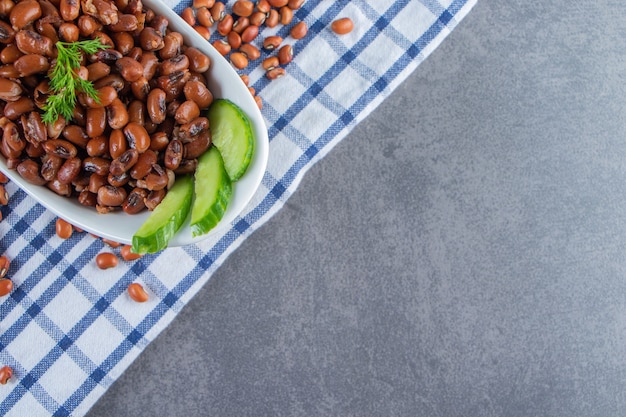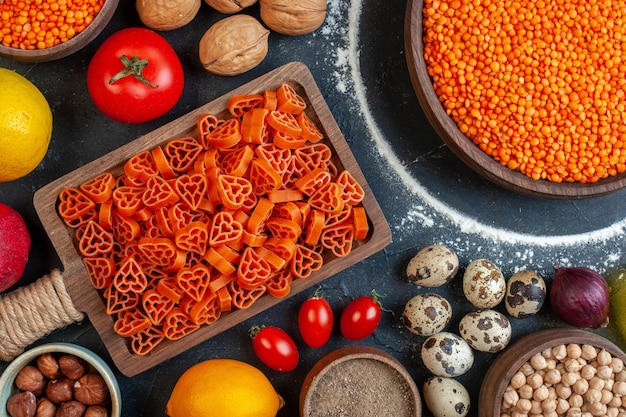Let me tell you, garbanzo beans are a kitchen staple for a reason. They're incredibly versatile, affordable, and packed with flavor. Whether you're a seasoned cook or just starting out, this guide will walk you through everything you need to know about cooking and using these delightful legumes.
Part 1: Getting to Know Garbanzo Beans

Before we jump into the nitty-gritty of cooking, let's first understand what makes garbanzo beans so special. These little powerhouses are actually a type of chickpea, known for their nutty flavor and creamy texture.
1. Types of Garbanzo Beans
You'll find garbanzo beans in a few different forms, each with its own advantages:
- Dried Garbanzo Beans: These are like the blank canvas of the bean world. They offer the most authentic, earthy flavor but require a little more prep time. Think of them as your go-to for truly flavorful dishes.
- Canned Garbanzo Beans: A true lifesaver for busy cooks, these beans are already cooked and ready to use. They're perfect for quick meals and add a delightful creamy texture to many dishes.
- Garbanzo Bean Flour (chickpea flour): This versatile flour is a gluten-free wonder, popular in Indian and Mediterranean cooking. It's perfect for baking flatbreads, snacks, and even desserts.
The type of garbanzo beans you choose really depends on the recipe and the amount of time you have. No matter which you choose, you're in for a treat.
Part 2: Soaking Dried Garbanzo Beans - The First Step to Success

Soaking dried garbanzo beans is a crucial step. It's like giving them a little spa treatment to make them more tender, easier to digest, and reduces their cooking time.
1. The Soaking Process
Here's how to properly soak dried garbanzo beans:
- Rinse Thoroughly: Give the beans a good rinse under cold water to wash away any dirt or debris. You'll want to make sure they're squeaky clean!
- Soak Overnight: Place the beans in a large bowl, cover them with plenty of cold water (at least two inches above the beans), and let them soak overnight.
- Drain and Rinse Again: In the morning, drain the beans and give them another good rinse.
Now, your beans are ready to be transformed into delicious dishes.
Part 3: Cooking Garbanzo Beans: A Simple Guide

Cooking garbanzo beans is a simple process. Just follow these easy steps:
1. The Cooking Process
- Boiling Water: Fill a large pot with plenty of water (about 4 inches deep) and bring it to a rolling boil. You'll want enough water to cover the beans comfortably.
- Add the Beans: Gently add the soaked beans to the boiling water, making sure not to overcrowd the pot. Give them some space to move around.
- Reduce Heat and Simmer: Once the water starts boiling again, reduce the heat to a simmer. Cover the pot and let the beans simmer for about 1 1/2 to 2 hours, or until they're tender but still retain their shape.
- Check for Doneness: To test for doneness, remove a bean from the pot and gently mash it between your fingers. If it easily breaks down, it's ready!
- Drain and Cool: Once cooked, drain the beans and let them cool slightly before using them in your recipes.
You've now got perfectly cooked garbanzo beans, ready to be incorporated into all sorts of dishes.
Part 4: Beyond the Basics: cooking techniques and Tips
While the basic cooking method works perfectly fine, there are a few techniques and tips that can elevate your garbanzo bean cooking game.
1. cooking tips
- Don't Overcook: Overcooked beans can become mushy, so be careful not to simmer them for too long. Cook them until tender but still hold their shape.
- Salt the Water: Adding salt to the cooking water helps to season the beans and enhance their flavor. Don't be afraid to use a generous pinch!
- pressure cooker Magic: If you're short on time, try using a pressure cooker. It significantly reduces the cooking time for garbanzo beans, making them a great option for weeknight meals.
- Experiment with Seasonings: Don't be afraid to experiment with different seasonings and flavors. Garbanzo beans pair well with herbs, spices, and even a squeeze of lemon juice.
2. Storage
Store cooked garbanzo beans in an airtight container in the refrigerator for up to 5 days. You can also freeze them for up to 3 months. To freeze them, spread the cooked beans on a baking sheet lined with parchment paper and freeze until solid. Then, transfer them to a freezer-safe bag.
Part 5: Garbanzo bean recipes: A World of Flavor
Now comes the fun part - unleashing the flavor potential of garbanzo beans! From classic dishes to creative twists, these beans are incredibly versatile.
1. Hummus: A Creamy Delight
Hummus is the king of garbanzo bean recipes. This creamy dip is made with garbanzo beans, tahini (sesame seed paste), lemon juice, garlic, and olive oil. It's perfect for dipping pita bread, vegetables, or even spreading on sandwiches.
2. Falafel: A Crispy Treat
Falafel, those deep-fried garbanzo bean balls, are a street food favorite. They're crispy on the outside and soft and fluffy on the inside, making them a delicious and satisfying snack. Try them in wraps, salads, or simply on their own.
3. Salads: A Hearty Addition
Garbanzo beans are the perfect addition to any salad. They add a hearty texture, a punch of protein, and a satisfyingly nutty flavor. They're particularly delicious in Mediterranean salads with feta cheese, olives, and tomatoes.
4. Soups and Stews: A Flavorful Booster
Garbanzo beans can add body and flavor to your favorite soups and stews. They pair beautifully with hearty vegetables like carrots, potatoes, and onions. They're also a great source of plant-based protein in vegetarian and vegan dishes.
5. Beyond the Kitchen: Desserts and More
Don't be afraid to get creative! Garbanzo beans can even be used in desserts. They add a subtle sweetness and a delightful texture to baked goods. Try them in muffins, cookies, or even brownies.
Part 6: The Power of Garbanzo Bean Flour
Let's talk about the versatile and delicious garbanzo bean flour, also known as chickpea flour. It's a gluten-free powerhouse that opens up a world of culinary possibilities.
1. Flatbreads: A Global Delight
Garbanzo bean flour is a traditional ingredient for making flatbreads like socca in France and chana paratha in India. These crispy flatbreads can be served as a side dish, a wrap for fillings, or even a base for pizza toppings.
2. Pancakes and Waffles: A Gluten-Free Treat
Use garbanzo bean flour as a gluten-free alternative to traditional wheat flour in your pancake and waffle batter. It adds a delightful nutty flavor and a lovely texture.
3. Breading for Vegetables and Fish: A Crispy Coating
Garbanzo bean flour is an excellent option for coating vegetables and fish before frying or baking. It creates a light and crispy coating that's both delicious and healthy.
4. Desserts: A Sweet Surprise
Don't be afraid to experiment with garbanzo bean flour in desserts! It adds a subtle sweetness and a lovely texture to cookies, brownies, and even cakes.
Part 7: FAQs: Common Questions about Garbanzo Beans
Let's address some of the common questions about these amazing beans.
1. How do I know if my garbanzo beans are bad?
Dried garbanzo beans can last for several years if stored properly in a cool, dark, and dry place. canned beans can be kept for up to a year. You'll know they've gone bad if they have an off smell or an unusual appearance. If they're discolored, moldy, or have an unpleasant smell, it's best to discard them.
2. Why do my garbanzo beans have a weird smell?
Sometimes, garbanzo beans can have a slightly earthy or musty smell. This is perfectly normal and doesn't mean they're bad. It's simply a result of their natural aroma. If the smell is particularly strong or unpleasant, you can try rinsing them thoroughly before cooking to help reduce it.
3. Can I use canned garbanzo beans instead of dried?
Absolutely! Canned garbanzo beans are a great shortcut. They're already cooked and ready to use, which saves you time and effort. Just be aware that they're usually packed in salt, so you might want to rinse them before using them in your recipes.
4. How do I remove the skins from garbanzo beans?
If you want to remove the skins from your garbanzo beans, you can do so by simmering them in a pot of water for a few minutes. The skins will loosen and you can easily remove them. However, the skins actually contain a lot of nutrients, so you don't have to remove them unless you prefer the texture.
5. Can I use garbanzo beans in place of other legumes?
Yes, you can often use garbanzo beans in place of other legumes like chickpeas, lentils, or black beans. However, keep in mind that different legumes have different cooking times, so adjust the cooking time accordingly.
With a little knowledge and a few simple steps, you can unlock the amazing flavors and versatility of garbanzo beans. So go forth and experiment! Happy cooking.
Everyone is watching

Prime Rib Roast Cooking Time Chart: Per Pound Guide
Cooking TipsPrime rib roast. Just the name conjures images of lavish dinners, crackling fires, and hearty laughter. It’s ...

How Long to Bake Potatoes in the Oven (Perfect Every Time)
Cooking TipsBaked potatoes are a staple in my kitchen. They're incredibly versatile, delicious, and surprisingly easy to m...

Perfect Rice Every Time: The Ultimate Guide to Cooking Rice
Cooking TipsAs a self-proclaimed foodie, I've always been a bit obsessed with rice. It's the foundation of countless cuisi...

The Ultimate Guide to Cooking Asparagus: Tips, Techniques, and Recipes
Cooking TipsAsparagus. The mere mention of this spring delicacy conjures up images of vibrant green spears, crisp and burs...

Ultimate Guide to Cooking the Perfect Thanksgiving Turkey
Cooking TipsThanksgiving. Just the word conjures up images of overflowing tables laden with delicious food, the scent of r...
